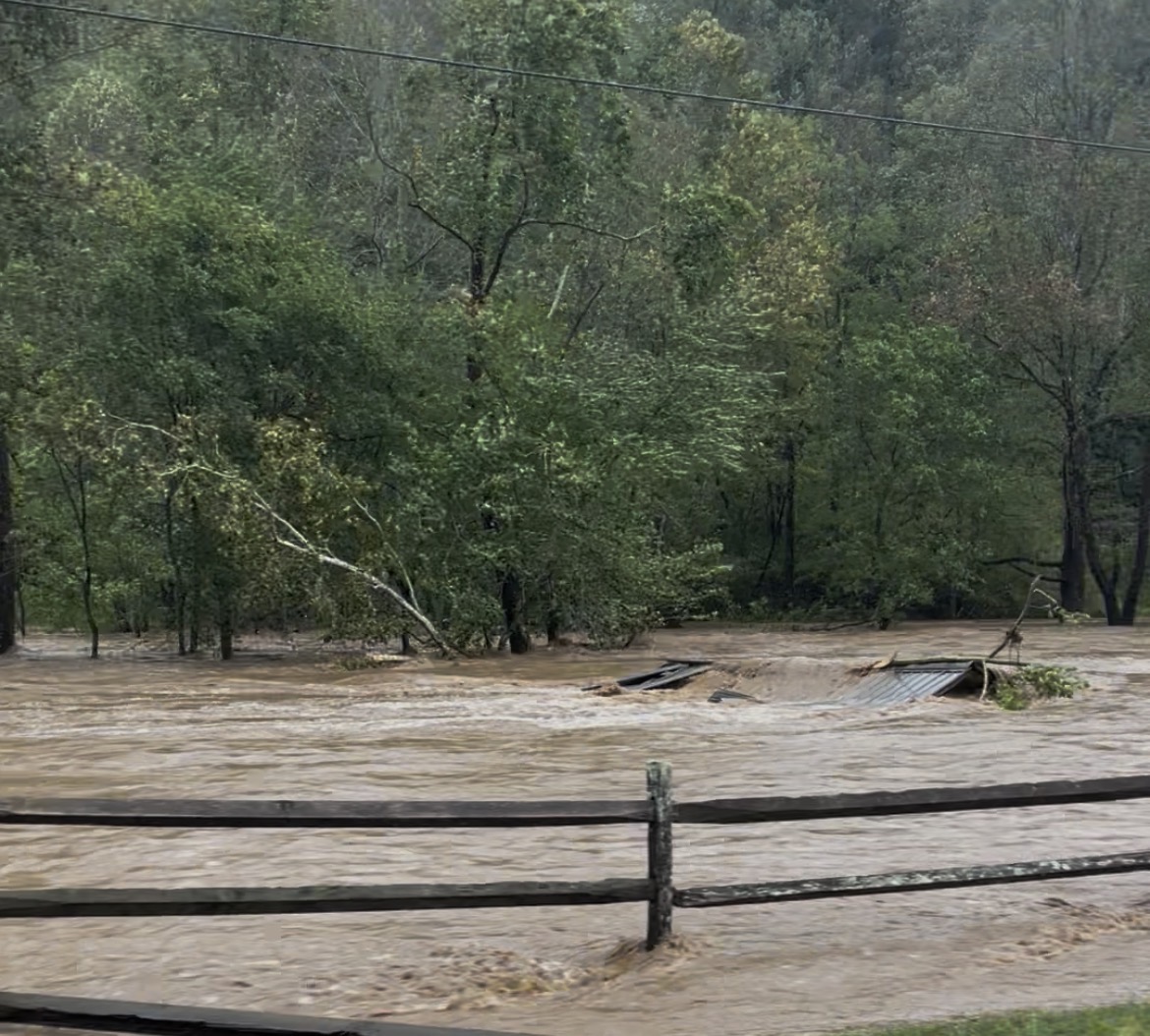One year ago, Hurricane Helene tore through western North Carolina, causing floods, road damage, and the destruction of local communities. The storm disrupted the lives of people all over the southeastern United States, leaving behind damage that took months to recover from. Now, one year later, the memory of the storm lingers as people continue to feel the devastating impact it left behind.
Freshman Kaitlyn Langdon was staying in a mountain house for a family reunion just outside of Boone last September when disaster struck.
“My most vivid memory was probably being stranded without any water and not being able to leave the house because of how bad the storm was. My cousin’s dog was barking a lot because of how much thunder and lightning there was, and I heard several trees fall down outside,” she says.
Langdon and her family were stuck in the house for a long time, unable to contact anyone because they had lost power. There were so many trees blocking the road that they couldn’t really leave, even after the storm let up. Luckily, Langdon’s grandfather lived at the bottom of the mountain; knowing that the family was staying there for the weekend, he was able to call for help to clear the roads.
“When we were finally able to leave, we saw farm animals near barns that had completely flooded,” Langdon recalls. “Further down the mountain, families were standing on the side of the road because their houses were flooded as well.”
Assistant principal David Guffey also had a personal connection to the disaster. His family lives near Chimney Rock, an area heavily impacted by Helene. It was where he grew up and started teaching at, and being forced to watch his loved ones go through that from a distance proved to be extremely difficult for him.
“It was frustrating and hurtful to see it happen,” Mr. Guffey says. “I really wanted to go and help, but I couldn’t because there was such a strain on resources there that they didn’t want additional people coming in since they really couldn’t support who was already there. It was hard watching from a distance and wanting to go help, but being told to stay away.”
The lack of resources in Chimney Rock affected more than just the number of people they could support. Mr. Guffey recalls how his parents’ home was completely destroyed by a tree that fell through it during the storm.
“It was a total loss,” he says. “There was a lot of that happening all over the area, so the resources to get homes repaired and rebuilt were strained. The work still needed to be done, but there weren’t enough workers to do it, and not enough building materials to make it happen.”
Problems like these weren’t limited to western North Carolina, however. Hurricane Helene’s impact stretched over 500 miles from the coast of Florida all the way into Appalachia; the entire region is low on resources and is still in the process of rebuilding homes and infrastructure, and many communities continue to face limited access to essential services. Even a year later, recovery is still ongoing, and the challenges people continue to face serve as a reminder of how deeply the storm changed their lives.
Image caption: Boone faced heavy flooding and damage in the aftermath of Hurricane Helene, as seen in this photo taken by freshman Kaitlyn Langdon.









